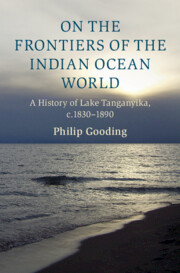Book contents
- On the Frontiers of the Indian Ocean World
- Cambridge Oceanic Histories
- On the Frontiers of the Indian Ocean World
- Copyright page
- Dedication
- Contents
- Figures
- Acknowledgements
- Note on the Text
- Abbreviations
- Introduction
- Part I Demarcations of Space
- 1 The Growth of ‘Emporia’
- 2 Changing Land Use in a Changing Climate
- 3 Traversing the Lake
- Part II Interactions
- Epilogue
- Glossary
- Bibliography
- Index
2 - Changing Land Use in a Changing Climate
from Part I - Demarcations of Space
Published online by Cambridge University Press: 21 July 2022
- On the Frontiers of the Indian Ocean World
- Cambridge Oceanic Histories
- On the Frontiers of the Indian Ocean World
- Copyright page
- Dedication
- Contents
- Figures
- Acknowledgements
- Note on the Text
- Abbreviations
- Introduction
- Part I Demarcations of Space
- 1 The Growth of ‘Emporia’
- 2 Changing Land Use in a Changing Climate
- 3 Traversing the Lake
- Part II Interactions
- Epilogue
- Glossary
- Bibliography
- Index
Summary
Chapter 2 examines an ‘agricultural revolution’ in the rural areas around Lake Tanganyika’s emporia, characterised by changes in labour regime, crop choice, and land-use. It uses climatological sources and the wider context of the Indian Ocean monsoon system to examine how the introduction of new crops (cassava, maize, and rice) affected agricultural productivity and vulnerability to the effects erratic climatic conditions, including droughts and floods. It argues that benign environmental conditions in the Indian Ocean World during mid-century contributed to the viability of large port-towns. However, erratic rainfall from 1876 onwards, the replacement of East African staples with less drought-resistant crops, and the increased demands on the region’s agricultural supplies from emporia and the caravan trade exacerbated trends towards violence and instability during the late 1870s and 1880s.
- Type
- Chapter
- Information
- On the Frontiers of the Indian Ocean WorldA History of Lake Tanganyika, c.1830-1890, pp. 64 - 95Publisher: Cambridge University PressPrint publication year: 2022

